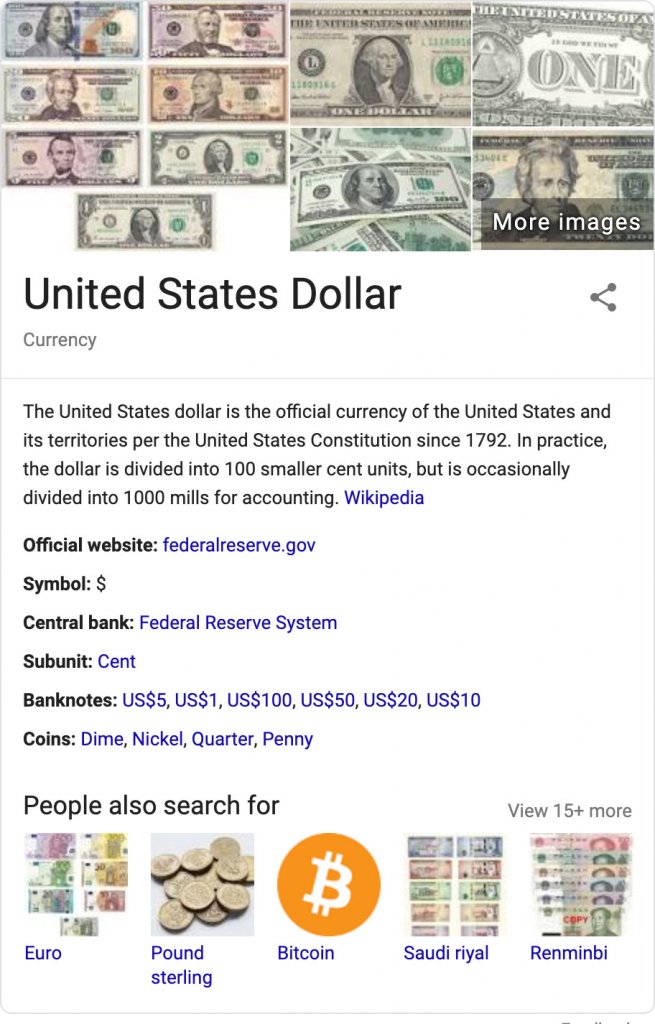 Data shows mainstream interest in Bitcoin is surging
Data shows mainstream interest in Bitcoin is surging Data shows mainstream interest in Bitcoin is surging

Cover art/illustration via CryptoSlate. Image includes combined content which may include AI-generated content.
Cryptocurrencies have grown from a niche market to a huge industry with a $230 billion market cap in less than a decade, but are yet to become a financial norm in a large part of the world.
However, there has been a steady increase in the amount of recognition the industry gets, from organic Google listings to traditional news outlets reporting on bitcoin. We explore all the ways crypto has entered the mainstream and what does this mean for the industry.
The ultimate goal for crypto—mainstream adoption
Ever since the first Bitcoin block was mined in January 2009, the goal of the crypto industry was to challenge traditional finance. And while the number of enthusiasts that gathered around Bitcoin increased year after year, it still may take decades before it would reach the number of people needed to make it become “mainstream.”

Increased pressure from financial regulators also didn’t help—while some countries such as China, Taiwan, Pakistan, and Iran have outright banned crypto trading, others have imposed banking bans and made it impossible for crypto companies to effectively operate.
Even in the United States, where owning and trading cryptocurrencies is currently legal, there is a small, but not insignificant movement calling for a ban on crypto trading.
However, cryptocurrencies have managed to defy all odds and reach heights few could have imagined just a few years ago.
New evidence proving that mainstream adoption is just around the corner is popping up everywhere—from Google listings and major news coverage to more inconspicuous places like the Apple App Store.
Google says Bitcoin is worth a look
 Getting a direct recommendation on Google Search would be a cause for celebration for any business, but it’s especially so in the case of Bitcoin. When googling “USD,” Bitcoin appears in the recommended searches.
Getting a direct recommendation on Google Search would be a cause for celebration for any business, but it’s especially so in the case of Bitcoin. When googling “USD,” Bitcoin appears in the recommended searches.
A quick check using a different browser, a VPN, and incognito mode proved the claim correct—Google does recommend Bitcoin when searching for USD.
This, however, isn’t a result of any kind of lobbying or intentional influence, as Google’s algorithm highlights the most searched word combination.
This means that not only has the usage of Bitcoin increased, so too has the interest in the cryptocurrency and its value in US dollars. Omar Bham, a crypto news curator, recently tweeted a chart showing that interest in Bitcoin has surged on Google Search Trends.
Bitcoin interest has SURGED on Google Search Trends. Ethereum/Cryptocurrency has not gone exponential… if BTC continues climbing, expect your alt portfolios to explode. Mark my words. pic.twitter.com/Eoh5LdZxTL
— Omar Bham (Crypt0) (@crypt0snews) May 15, 2019
The surge preceded Bitcoin’s latest price spike so it wouldn’t be bold to assume that it was a result of an organic increase in interest.
This can also be seen in the number of tweets mentioning Bitcoin—over the last 24-hours, the 7-day average tweets per day were 23,500, up from 17,400 this time last month.
More people own bitcoin than ever before
It’s not just that people are talking about crypto—they own it, too. Kevin Rooke, a cryptocurrency analyst, recently shared a graph showing the increase in the number of addresses that own more than 1 Bitcoin.
The Bitcoin virus continues to spread.
732,982 Bitcoin addresses now own more than 1 BTC.
— Kevin Rooke (@kerooke) May 16, 2019
According to his data, there are currently 733,000 Bitcoin addresses that hold 1 or more BTC. While this is a slight increase since last year, comparing the number with any previous year shows an enormous change. In May 2013, just over 200,000 addresses owned more than 1 BTC, while in 2010, that number was less than 50,000.
Apart from owning more, people are also trading more, especially when it comes to Bitcoin. The world’s largest cryptocurrency has seen a 20 percent increase in the number of active addresses on its network since last year, while Dogecoin, Ripple’s XRP, and Dash increased by 27, 38, and 58 percent, respectively.
Judging by the previously mentioned stats, more trading equals more attention, which helps bring Bitcoin closer to a much larger audience.
Some of the world’s largest corporations opened their doors to crypto
The increase in attention caused by a surge in trading has opened up new doors for cryptocurrencies. Crypto payments are no longer a thing that’s bound to happen in the future—it’s a reality for some of the biggest merchants across the world.

Earlier this month, crypto payments have been enabled at tens of thousands of merchants in the US on the Flexa network. Flexa’s first app, SPEDN, allows users to spend crypto at some of the biggest brands in the US, including Whole Foods, Barnes & Noble, and dozens of others.
After retailers such as Steam and Twitch have reversed their decisions to accept crypto payments, exposing such a large number of globally known merchants is regarded as a major win for crypto acceptance.
Brian Armstrong, the CEO of Coinbase, pointed out that crypto is slowly going from niche to mainstream. During this week’s Consensus conference in New York, he said:
“In crypto, the most mainstream thing you can think of is swiping your credit card at Starbucks. That will probably be the last area that’s disrupted by crypto.”
And while cryptocurrencies might come to Starbucks in the near future, Coinbase itself has come to a much larger audience than anyone could have expected. The largest cryptocurrency exchange to come out of the United States has made it to the list of trending apps on the Apple App Store.
Some Twitter users have pointed out that the last time Coinbase, or any other crypto exchange for that matter, was trending on the App Store was almost a year and a half ago.
Increased interest brings a more stable market
Having the interest in the crypto market frequently go up and down isn’t a new thing—mentions of Bitcoin on Twitter peaked at the beginning of December 2017 but fell to a historic low just a month later.
However, what we have seen in the past six months is a slow but steady increase in the attention cryptocurrencies receive. This makes it more likely that the entire industry’s market capitalization will follow that growth.
Steady growth, followed by an increased interest in owning and trading cryptocurrencies will ultimately be what brings stability to the industry.



 CoinGlass
CoinGlass 


 Farside Investors
Farside Investors 

























































































